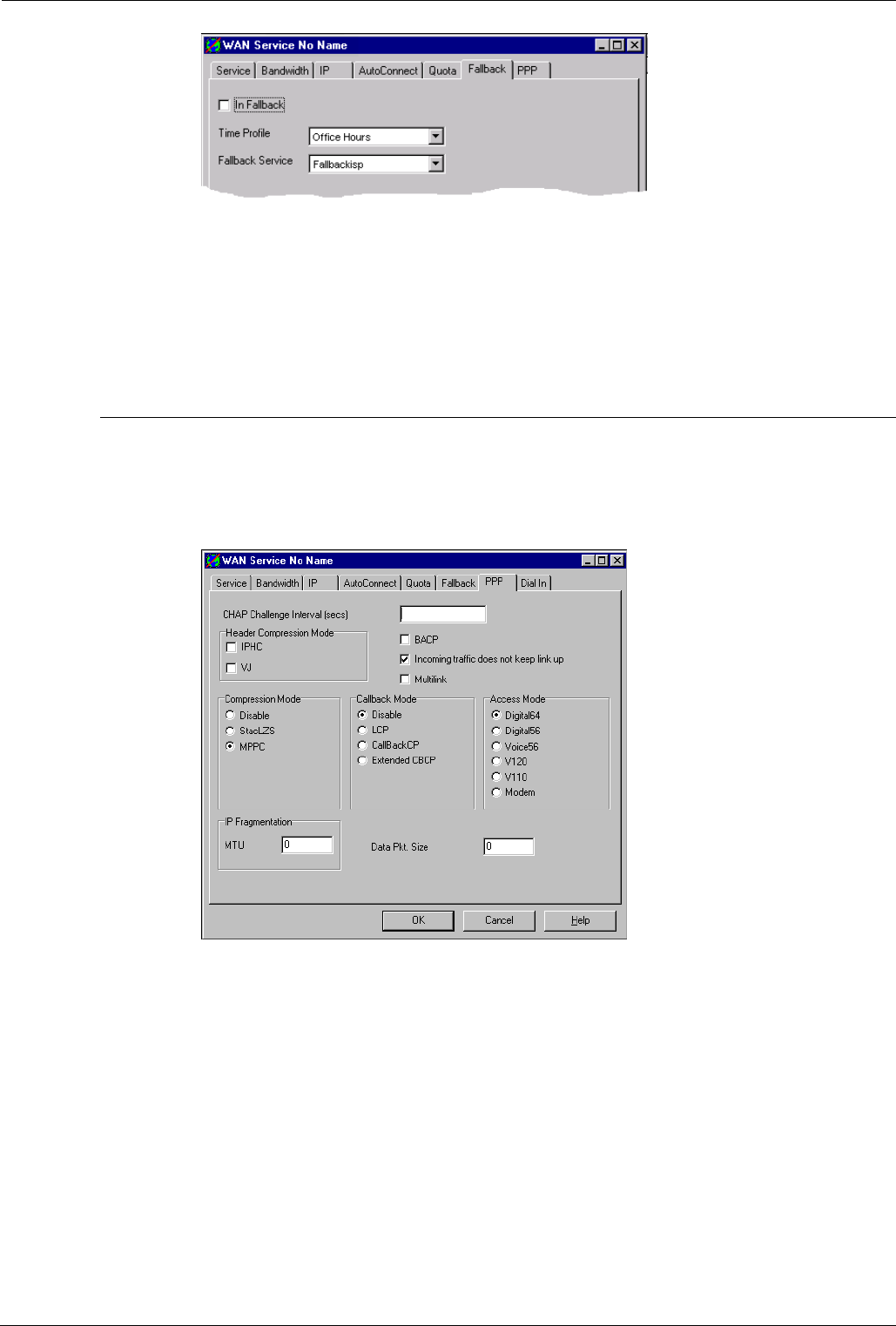
Page 52 - Service Configuration The Configuration Tree Functions
The Fallback Tab
The Fallback tab enables you to switch to another service, either automatically,
as defined by a time profile, or manually. In this way you can take advantage of,
say, a cheaper off-peak service provider or change quickly to a standby service
provider should your own be out of service.
The Time Profile and Fallback Service are selected from drop-down lists showing
all those currently configured for the system. Ticking the In Fallback box
immediately switches to the Fallback service.
The PPP Tab
Point-to-Point Protocol (PPP) is a protocol used with various host-to-client and
router-to-router dialled service applications. It offers a number of facilities, such
as PAP/CHAP password authentication, compression, and dynamic bandwidth
allocation.
Header Compression Mode: Enables the negotiation and use of IP Header
Compression. Supported modes are IPHC and VJ.
CHAP Challenge Interval (Seconds): The period between successive CHAP
challenges ("Handshakes"). Some applications, such as Windows 95 Dial-Up
Networking, do not support this facility. In these cases, the field must be left blank
or set to zero.
Incoming traffic does not keep link up:
When selected then, if connected to the Internet and nothing is being sent by
IPNC, the call will be dropped after a pre-set time (idle time).
Van Jacobson Header Compression: Used to reduce PPP header size and
hence improve bandwidth utilization.
Multilink: Enables negotiation and use of the Multilink protocol (MPPC) on the
link(s) into this service. Multilink must be enabled if there is more than one
channel that is allowed to be Bundled/Multilinked to this RAS service.
Page 52 - The Configuration Tree Functions INDeX IPNC Cassette Administration Manual
Service Configuration 38DHB0002UKDD – Issue 7 (22/11/02)


















